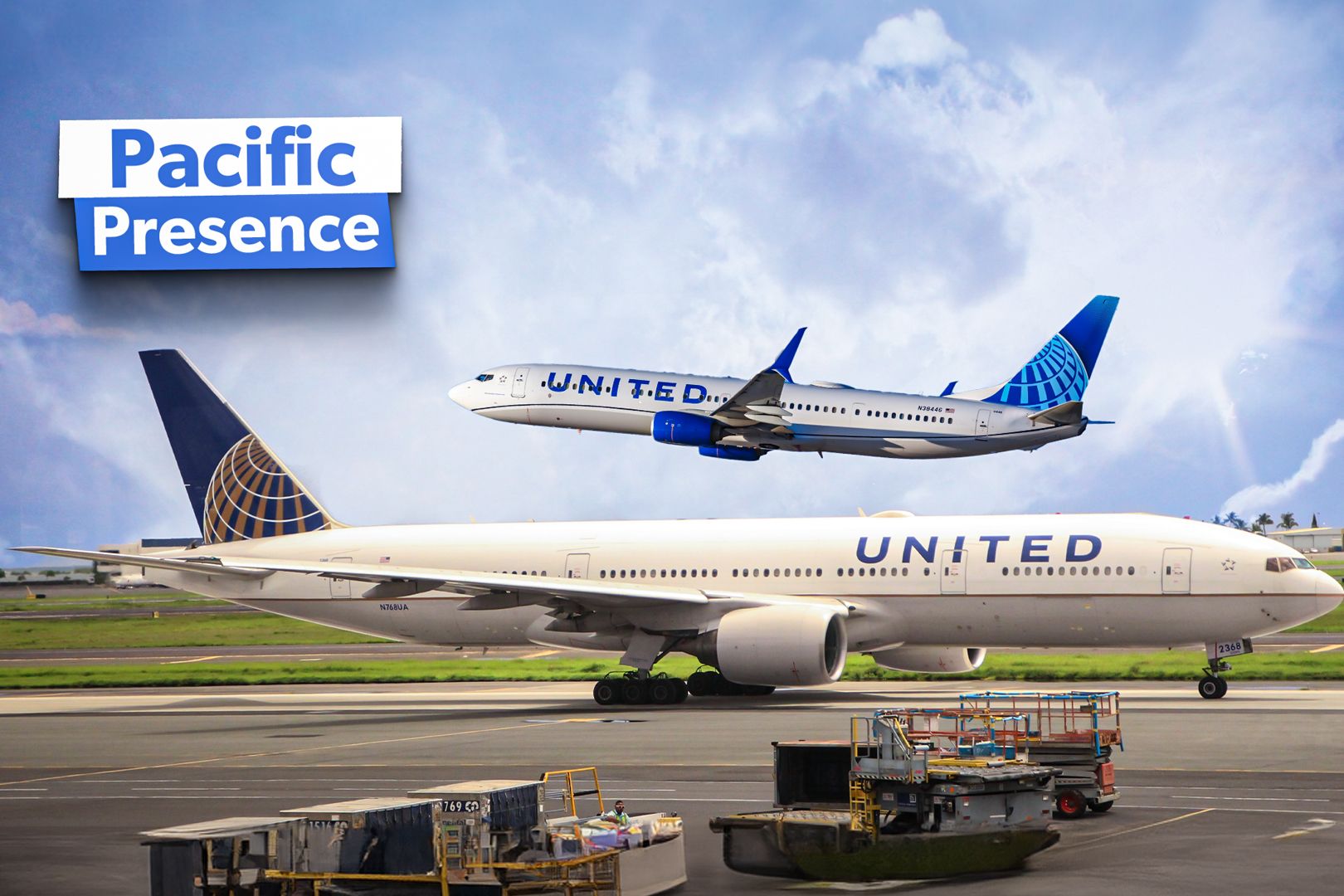Summary United Airlines operates 680 monthly flights in Guam, creating a large presence on the island. Continental Micronesia, a subsidiary of Continental Airlines, had a major role in establishing Guam's air operations. United and Continental Airlines merged in 2010, leading to United's significant presence and hub in Guam.
Guam, the largest island in Micronesia, is one of the more important regions where United Airlines operates. Earlier this year, it was announced that the carrier would operate the route connecting Guam and Tokyo. Currently, United also has a daily flight from Antonio B.

Won Pat International Airport (GUM) to Tokyo’s Haneda Airport (HND) . This 1,555-mile-long journey takes approximately four hours to complete in United’s Boeing 737-800. The carrier also operates 4-5 daily flights from Guam to Narita Airport (NAR).
This month, the Chicago-based carrier has 680 flights in Guam. Last year’s data hinted that United had 680 flights scheduled to and from GUM in August. Ten of the eleven routes utilized a Boeing 737-300.
But the numbers dwarf those from United’s largest hubs . United has 179,835 scheduled flights from Chicago O’Hare International Airport (ORD), offering 22.6 million seats.
Despite the small number of operations (compared to its largest hubs), many people are left wondering why the airline has such a large presence in Guam. United Airlines’ Operations in Guam United Airlines, which has operated in Guam for more than half a decade, is the largest airline in this unincorporated territory of the United States in the Micronesia region. United is the sole carrier offering flights between Guam and Fukuoka, Osaka, and Nagoya in Japan.
In the more than 87 weekly flights the Chicago-based carrier operates to 14 destinations from Guam, it also connects Guam to islands in the Federated States of Micronesia, Marshall Islands and Palau. United uses its Boeing 737-800s on the Island Hopper route . The Island Hopper route is the only air service connecting some communities in the islands.
Between departing from Honolulu at 7:10 and arriving in Guam at 18:15, the Boeing 737-800 involves a stop at the following airports: Marshall Islands International Airport (MAJ) at 10:15. Bucholz Army Airfield (KWA) on Kwajalein Atoll in the Marshall Islands at 12:05 Kosrae International Airport (KSA) on the Island of Kosrae at 13:35. Pohnpei International Airport (PNI) in the capital of the Federated States of Micronesia at 14:40.
Chuuk International Airport (TKK) at 15:45. United Airlines has nearly 99% of the market share at GUM. So, it might be quite natural for United to have a hub in Guam.
However, with many other large airlines operating in the United States that have competed with United on various routes, how did United establish such a large presence in Guam? And we’re led to the story of Continental Micronesia Continental Micronesia was a carrier that saw some glorious operations in Guam. The airline was a wholly owned subsidiary of Continental Airlines, and was, at one point, Guam’s largest private employer. It had 1500 employees and carried out 236 operations from Guam per week.
Continental Micronesia was Guam's link with the outside world. The Island Hopper route that United currently serves was started by Continental Micronesia. This journey lasting more than 14 hours necessitated a third pilot for Continental.
Here are a few notable things about the carrier: Founded 1968 Fleet 727-100, 727-200, and 727-combi freight (in 1983) Boeing 737 and 4 Boeing 767-400 (in 2010) Hub Antonio B. Won Pat International Airport (GUM) Mark Finlay, a journalist for Simple Flying, reported in his excellent analysis of the fall of Continental Micronesia about how this Guamanian airline was the only carrier in the region: “From its inception, the airline had a monopoly in the Micronesia region, and was the only travel link people had with the world beyond the horizon. Except for those in the airline's headquarters on the island of Saipan, all the airline's employees were Micronesian.
In the early 1980s, the airline expanded its footprint with flights from Guam to Japan to entice Japanese tourists to the tropical island.." The Japanese have always had a fascination for traveling to Hawaii , and other islands in the Oceania region, and this was what Continental Micronesia was tapping into: "By the late 2000s, Continental Micronesia had a monopoly on flights between Guam and Honolulu, and profited from Japanese tourists looking to vacation closer to home.
In 2009, Continental Micronesia expanded its network with non-stop flights between Honolulu and Nadi in Fiji.” And then Continental Airlines merged with United In 2010, United Airlines merged with Continental Airlines, creating the biggest airline back then. After this three billion dollar merger, Scott Sonenshein, an assistant professor at the Jones Graduate School of Business at Rice University, talked to the New York Times about how mergers would affect consumers : “Airlines are struggling to find a business model that makes sense.
..Consolidation gives them more leverage.
As a consumer, you will have less choices, fewer routes, higher prices and more fees.” The two airlines had decided that the merger would allow them to expand to newer markets alongside saving money. After the merger, the name of the United Airlines was kept “because both sides felt it had more value and that more people were familiar with it.
” Fancy traveling 'back in time'? Check out this United Airlines service! The tail of all the aircraft of the new airline had Continental’s gold globe logo instead of United's colorful tulip logo. The merger also meant that Continental’s hub in Guam was replaced by United’s. And this is the reason why United Airlines has such a large presence in Guam.
.



















